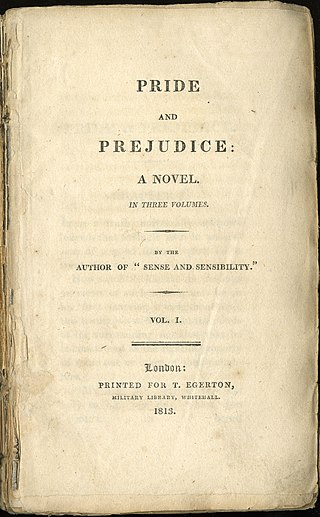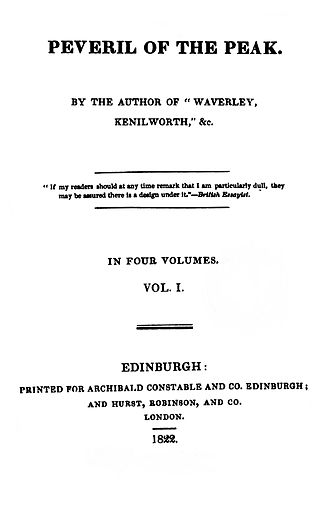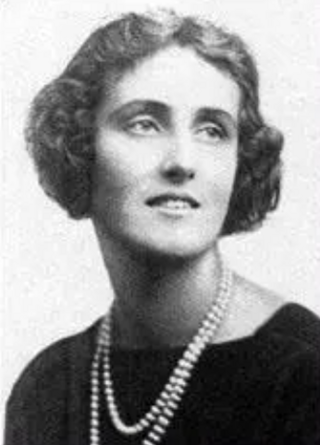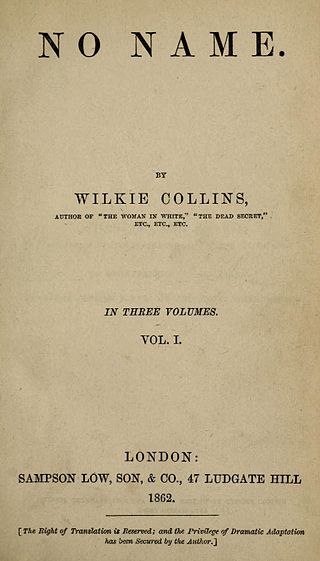Related Research Articles

Pride and Prejudice is the second novel by English author Jane Austen, published in 1813. A novel of manners, it follows the character development of Elizabeth Bennet, the protagonist of the book, who learns about the repercussions of hasty judgments and comes to appreciate the difference between superficial goodness and actual goodness.
The Forsyte Saga, first published under that title in 1922, is a series of three novels and two interludes published between 1906 and 1921 by the English author John Galsworthy, who won the 1932 Nobel Prize in Literature. They chronicle the vicissitudes of the leading members of a large upper-middle-class English family that is similar to Galsworthy's. Only a few generations removed from their farmer ancestors, its members are keenly aware of their status as "new money". The main character, the solicitor and connoisseur Soames Forsyte, sees himself as a "man of property" by virtue of his ability to accumulate material possessions, but that does not succeed in bringing him pleasure.

Middlemarch, A Study of Provincial Life is a novel by English author George Eliot, the pen name of Mary Ann Evans. It appeared in eight installments (volumes) in 1871 and 1872. Set in Middlemarch, a fictional English Midlands town, in 1829 to 1832, it follows distinct, intersecting stories with many characters. Issues include the status of women, the nature of marriage, idealism, self-interest, religion, hypocrisy, political reform, and education. Despite comic elements, Middlemarch uses realism to encompass historical events: the 1832 Reform Act, early railways, and the accession of King William IV. It looks at medicine of the time and reactionary views in a settled community facing unwelcome change. Eliot began writing the two pieces that formed the novel in 1869–1870 and completed it in 1871. Initial reviews were mixed, but it is now seen widely as her best work and one of the great English novels.

Charles Brandon, 1st Duke of Suffolk was an English military leader and courtier. Through his third wife, Mary Tudor, he was brother-in-law to King Henry VIII.

Persuasion is the last novel completed by the English author Jane Austen. It was published on 20 December 1817, along with Northanger Abbey, six months after her death, although the title page is dated 1818.
Margaret Drummond was a daughter of John Drummond, 1st Lord Drummond, and a mistress of King James IV of Scotland.
Margaret of Norfolk or Margaret of Brotherton, Duchess of Norfolk in her own right, was the daughter and eventual sole heir of Thomas of Brotherton, eldest son of King Edward I of England by his second marriage. In 1338, she succeeded to the earldom of Norfolk and the office of Earl Marshal. In 1397, she was created Duchess of Norfolk for life.

The Way of the World is a play written by the English playwright William Congreve. It premiered in early March 1700 in the theatre in Lincoln's Inn Fields in London. It is widely regarded as one of the best Restoration comedies and is still occasionally performed. Initially, however, the play struck many audience members as continuing the "immorality" of the previous decades, and was not well received.

The History of Pendennis: His Fortunes and Misfortunes, His Friends and His Greatest Enemy (1848–50) is a novel by the English author William Makepeace Thackeray. It is set in 19th-century England, particularly in London. The main hero is a young English gentleman Arthur Pendennis, who is born in the country and sets out for London to seek his place in life and society. As such, it is generally categorized as a bildungsroman. The novel took two years for Thackeray to write and, in line with other Thackeray works, most notably Vanity Fair, it offers an insightful and satiric picture of human character and aristocratic society. The characters include the snobbish social hanger-on Major Pendennis and the tipsy Captain Costigan.

Katheryn of Berain, sometimes called Mam Cymru, was a Welsh noblewoman noted for her four marriages and her extensive network of descendants and relations.
The Palliser novels are six novels written in series by Anthony Trollope. They were more commonly known as the Parliamentary novels prior to their 1974 television dramatisation by the BBC broadcast as The Pallisers. Marketed as "polite literature" during their initial publication, the novels encompass several literary genres including: family saga, bildungsroman, picaresque, as well as satire and parody of Victorian life, and criticism of the British government's predilection for attracting corrupt and corruptible people to power.

The Woman in White is Wilkie Collins's fifth published novel, written in 1860 and set from 1849 to 1850. It started its publication on 26 November 1859 and its publication was completed on 25 August 1860. It is a mystery novel and falls under the genre of "sensation novels".

Peveril of the Peak (1823) is the longest novel by Sir Walter Scott. Along with Ivanhoe, Kenilworth, and Woodstock this is one of the English novels in the Waverley novels series, with the main action taking place around 1678 in the Peak District, the Isle of Man, and London, and centring on the Popish Plot.

Lady Cynthia Blanche Mosley, nicknamed "Cimmie", was a British aristocrat, politician and the first wife of the British Fascist politician Sir Oswald Mosley.

Lady of Quality is the final Regency romance written by Georgette Heyer. Published in the UK by The Bodley Head in 1972, and by E. P. Dutton in the U. S., it was the last of her novels to be published during her lifetime.

No Name is a novel by Wilkie Collins, first published in 1862. Illegitimacy is a major theme of the novel. It was originally serialised in Charles Dickens' magazine All the Year Round before book publication. It is the second of his four 'great novels' after The Woman in White (1860), and before Armadale (1866) and The Moonstone (1868).
This is a list of fictional stories in which illegitimacy features as an important plot element. Passing mentions are omitted from this article. Many of these stories explore the social pain and exclusion felt by illegitimate "natural children".

Mary Boleyn, also known as Lady Mary, was the sister of English queen consort Anne Boleyn, whose family enjoyed considerable influence during the reign of King Henry VIII.

Thomas Montagu, 4th Earl of Salisbury, KG of Bisham in Berkshire, was an English nobleman and one of the most important English commanders during the Hundred Years' War.

Lady Mary Brandon was an English noblewoman, and the daughter of Charles Brandon, 1st Duke of Suffolk, by his second wife, Anne Browne. Mary was the wife of Thomas Stanley, 2nd Baron Monteagle, by whom she had six children.
References
- 1 2 3 Peters, Catherine (1993). The King of Inventors . Princeton University Press. ISBN 978-0-691-03392-1.
- 1 2 3 4 Page, Norman (1995). Man and Wife (Introduction to Oxford Classics ed.). Oxford University Press.
- ↑ Peters, Catherine (1989). Armadale (Introduction to Oxford Classics ed.). Oxford University Press.
- ↑ "Theatre Royal". The Herald (Melbourne) . No. 7840. Victoria, Australia. 20 February 1871. p. 3. Retrieved 14 July 2021– via National Library of Australia.
